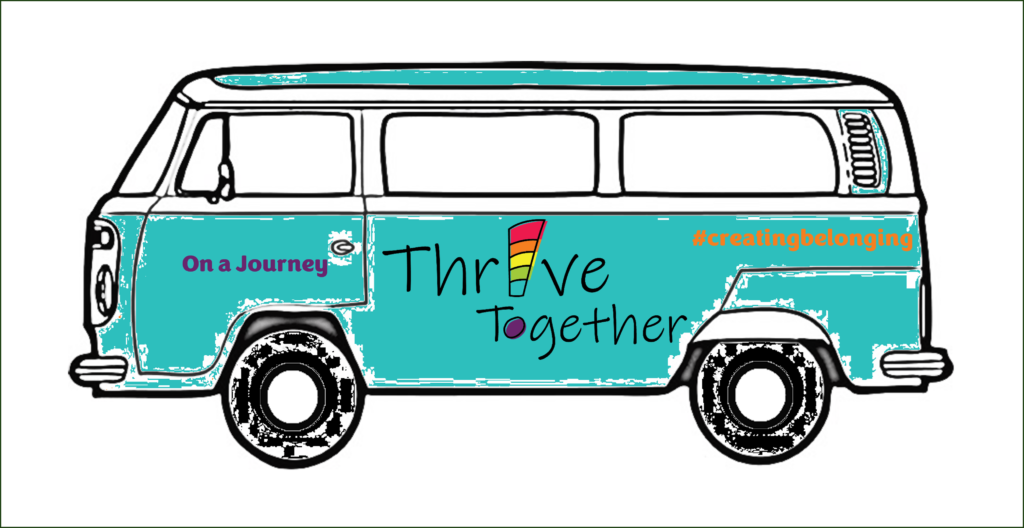
The skilled lifeguards push their buoys into the soft sand and position the flags to designate the ‘safe area’ for swimming in the sea. They know what others might not, they’re taking some responsibility for the safety of splashers and swimmers today. They will blow their whistle if someone ventures past the area of safety and beckon them back into the safe zone – reminding them of the safe space that has been marked out.
This is a great analogy for the creating of safe spaces to talk about what are often called “sensitive issues” of race, gender, inequality, injustice as we seek to address the challenge of diversity, equity and inclusion. I’d like to share three thoughts around safe spaces: The value of creating them, how we decide if they’re safe and the concept of safe-enough.
The Value of Creating Safe Spaces
Our human brain is designed to keep us safe. To defend. To ward off all possible danger – and so when we approach conversations that we upfront are framing as ones to address ‘issues’ or ‘challenges’ we can know that for many there is a natural caution. Possibly even an immediate wall that goes up. When we feel unsafe, we cannot think, the thinking part of our brain cannot engage. So how are we meant to address issues and challenges that require deep thinking, about ourselves and those around us, if we’re in a state where thinking is all but impossible. We will only make headway in our workplaces, schools, classrooms, playgrounds, sports fields, if they are safe spaces.
 At the beginning of every workshop or training, I facilitate the drawing up of a Journey Agreement – imagine that we’re going on a journey together (which I trust is the beginning or continuation of a life-long journey when I’ve left.) The Journey Agreement invariably has elements of listening to understand, not judging each other and being respectful. If we could carry this agreement with us into every workspace, classroom, playground, etc… we would be more able to hear others and be heard, see others and be seen. We would be more able to think about what is happening than reacting to it from a space of primal fear, defence and justification.
At the beginning of every workshop or training, I facilitate the drawing up of a Journey Agreement – imagine that we’re going on a journey together (which I trust is the beginning or continuation of a life-long journey when I’ve left.) The Journey Agreement invariably has elements of listening to understand, not judging each other and being respectful. If we could carry this agreement with us into every workspace, classroom, playground, etc… we would be more able to hear others and be heard, see others and be seen. We would be more able to think about what is happening than reacting to it from a space of primal fear, defence and justification.
I’m an amiable, outgoing person who likes to make people laugh (I try!) even if it is at my own expense. I can see how easily I can create a space that feels safe to most people, that’s authentic and genuine, with a clear agenda that we explore on our journey together with no ‘right’ or ‘wrong,’ that there is space for disagreement and divergent thinking.
The more open we all become to questioning ourselves, which we do best when we feel safe, the safer the environment around us becomes. The safer the environment, the more we can question. The more we can question, the safer we truly are. Do you see the cycle? The value is immeasurable, being able to live knowing that my ultimate ‘safety’ is not in danger by allowing myself to be challenged in my thinking.
How we Decide if a Space is Safe
I reposted something last week that made me analyse how feeling safe around people is complex. A LinkedIn post shared Jonathan Lewis Dent’s Instagram post, “Imagine if we measured success by the amount of safety that people felt in our presence.” This resonates with me and on first impact, it speaks to acceptance, belonging, embracing diversity. Creating Belonging for everyone.
On a deeper level, however, it raises an issue…
I learnt about neuroception recently. The sub-conscious process by which our neural circuits determine whether a situation or person is safe, dangerous, or life-threatening. However, with unconscious bias, the socialisation of how we view genders or race, our neuroception will sometimes tell us we are unsafe based on wrong or unproven data points. It’s what might make someone, without real thinking, lock their car door when a young male walks past, but not when a young female does. Or move something out of sight when they see a black individual, but not a white one. It’s what feeds many of these sub-conscious microaggressions.
In that situation it’s a terrible idea to measure success based on how safe people feel around you.
These juxtaposed thoughts around safety being felt in someone’s presence are why we HAVE to get better at understanding and developing knowledge and language to discuss these ideas and others like it and how they impact us.
Safe-Enough Spaces
 Finally, I was awakened to the reality that you can never create a guaranteed safe space for someone. A little like the lifeguards setting up a safe space, they cannot guarantee safety. So whilst we do all we can to create safety for others, there is always a risk factor. We need our yellow buoys poised ready to jump in if waters get choppy and bring a sense of safety again to the volatile situation. There are risks on this journey – we can make mistakes, discover our own new levels of unconscious bias or feel vulnerable. Yet, so long as the space is ‘safe-enough’ we must go swim, we must find the courage to take our own next steps on the journey of creating belonging for everyone.
Finally, I was awakened to the reality that you can never create a guaranteed safe space for someone. A little like the lifeguards setting up a safe space, they cannot guarantee safety. So whilst we do all we can to create safety for others, there is always a risk factor. We need our yellow buoys poised ready to jump in if waters get choppy and bring a sense of safety again to the volatile situation. There are risks on this journey – we can make mistakes, discover our own new levels of unconscious bias or feel vulnerable. Yet, so long as the space is ‘safe-enough’ we must go swim, we must find the courage to take our own next steps on the journey of creating belonging for everyone.
Growing Confidence
Many of us are like me swimming in the sea – we need lifeguards to help us create safe spaces at this point in our journey. Yet the hope for me is that we all get better at “reading the sea” for ourselves. Then, even when there’s no lifeguard present, we can have the confidence to swim. The more we find ourselves in authentically safe enough spaces, the more we will find ourselves gaining the confidence to have the conversations that should be had in everyday life, not just at the DEI workshop or because of an initiative.
The waves will always be beckoning… who’s up for a dip?!




Little did I know when I post this blog, that 3 days later it would be me in the water with two children signalling to the lifeguard, for the first time in my life, that I needed help.
It’s ok to need help. It will happen when we choose to swim.
Will I choose to swim in the sea again. Yes (I did within a few minutes with one child) Will the kids swim again? Yes. We can’t avoid because it gets scary, though one child will need to process her emotional experience to build courage again to swim. But will she? Of course. With love, understanding, motivation and support. In a safe space.
And so it is with the necessary conversations around diversity.
I feel this post and today’s experience was insanely timely. Could not have predicted it.
Grateful to those who have created for me and helped me understand creating safe spaces and inspire me to create safe spaces so we can bring change and create belonging.